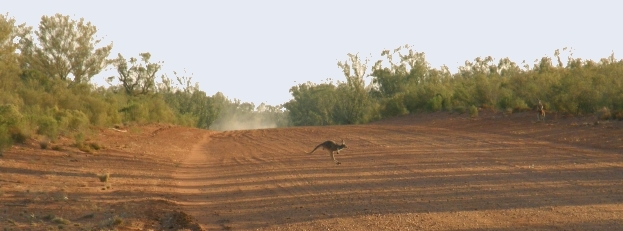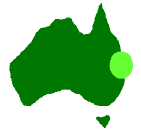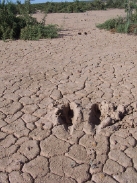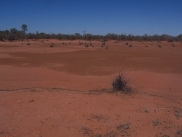 |
|||||||||||||||
|
|||||||||||||||
|
|
|||||||||||||||
Australia(A very
different continent: Wildlife, Weather,
Safety, Trivia)
|
Southern
Queensland & northern NSW
(A very
special part of our continent: scenic,
varied and rich in wildlife species) |
BrisbaneWhere to stay and what to do in Brisbane before and after our tours |
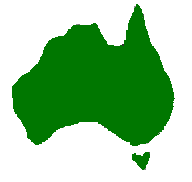 |
|
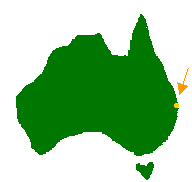 |
Australia: what makes it so different?
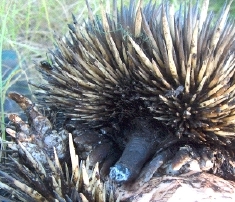 Wildlife
Wildlife
Australia drifted alone for many millions of years after splitting from Gondwana, and developed animals and plants very difference from other parts of the world.
For instance half our mammal species are marsupials (babies born in embryonic stage and sheltered in mother's pouch while developing further), we have the only egg-laying mammals outside of New Guinea, and most cockatoos are Australian. See our pages on Australian Wildlife for further details.
Weather
We also have the most unpredictable rainfall in the world.
The photo to the right shows kangaroo tracks across a vast dried-up lake (which has since re-filled)
Seasons:
- Coastal
northern Australia (including southern
Queensland) usually gets wet summers and dry
winters,
- Coastal
southern Australia (e.g. Melbourne,
Adelaide, Perth) mostly has dry summers and
wet winters
- What happens in
the outback is anyone's guess! Some areas
can go years without rain, and then, at any
time of year, be inundated with floods
Landscape: wide open spaces
This gives a feeling of spaciousness and some wonderful sunsets.
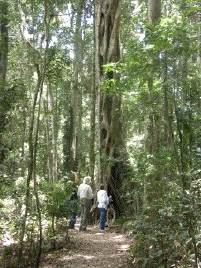 The combination of far
horizons and remoteness from cities makes
the outback (and many coastal areas) ideal for
observing the stars and planets. The
Southern Cross (which shows on the Australian
and New Zealand flags) can only be seen from the
Southern Hemisphere, and the Milky Way is more
brilliant here than in the Northern Hemisphere
(more stars visible).
The combination of far
horizons and remoteness from cities makes
the outback (and many coastal areas) ideal for
observing the stars and planets. The
Southern Cross (which shows on the Australian
and New Zealand flags) can only be seen from the
Southern Hemisphere, and the Milky Way is more
brilliant here than in the Northern Hemisphere
(more stars visible).A chain of mountains down the eastern coast gives higher rainfall (capturing moisture from winds blowing in from the Pacific Ocean), fertile soils (from the ancient volcanoes that formed the mountains) and varied landscape. There are other hilly regions also in other parts of the continent. None of our mountains are really high by world standards, but they do provide some very beautiful scenery, forests and unique (in the true sense of the word) wildlife.
Safety
 Australia
is
the only continent not divided into different
nations, and has very little experience of war
or revolution within its own shores. Our
political stability and welfare system (meaning
the unemployed are not as desperate as in some
regions) makes this one of the safest continents
to travel around. There are dangers of
course, but our cities are not high in
violent crime rate, and with a little common
sense (e.g. not walking alone down dark streets
in the middle of the night, and as a general
rule not hitching rides or picking up
hitch-hikers) most trouble is easily
avoided.
Australia
is
the only continent not divided into different
nations, and has very little experience of war
or revolution within its own shores. Our
political stability and welfare system (meaning
the unemployed are not as desperate as in some
regions) makes this one of the safest continents
to travel around. There are dangers of
course, but our cities are not high in
violent crime rate, and with a little common
sense (e.g. not walking alone down dark streets
in the middle of the night, and as a general
rule not hitching rides or picking up
hitch-hikers) most trouble is easily
avoided.Despite some popular books, our wildlife is not as dangerous as may other regions. There are no large predators in the forests. We do have some of the world's most venomous snakes, but they don't stalk us (they know we're too big to eat), and they're usually eager to get out of our way. Many of our snakes are virtually harmless (but it's still best to keep your distance, as identification can be tricky). Crocodiles in northern rivers and sharks in coastal waters do stalk us as prey, and some of the jellyfish in northern coastal waters, especially in summer, can be lethal. Most spiders - apart from the redback and the funnel-web - are not at all dangerous, even if some bites are painful, and they only bite in defense if we're careless enough to sit on them, reach a hand into dark crevices where they're hiding, or put on a boot or glove that has been stored outside without looking inside it first. If you are unlucky enough to get bitten though, and think it may be something dangerous, you should relax as much as possible (to stop the blood from circulating too fast through the body) and seek medical aid promptly.
Exposure to the extremes of temperature and dehydration are usually bigger dangers than wildlife for those who get lost in the bush. If heading into remote areas, whether walking or driving - make sure you carry enough water and have warm clothing or at least a thermal rug in case an unforeseen event (including breaking an ankle or simply getting lost) causes you to spend a night outdoors (which tends to happen fairly often in some districts). Equip yourself with a good map and compass, ask local advice and tell people your destination before tackling a wilderness walk or mountain climb.
Some Aussie trivia. Did you know....
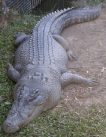 We have the world's biggest
crocodile (shared with tropical Asia), the
world's most venomous snake, the world's
longest hibernator, the world's smallest
gliding mammal, the world's longest-necked
fresh-water turtle, more marsupials than any
other country, the world's largest and
smallest marsupials (and the largest fossil
marsupial), the world's only venomous mammal,
and more skinks than any other country,
We have the world's biggest
crocodile (shared with tropical Asia), the
world's most venomous snake, the world's
longest hibernator, the world's smallest
gliding mammal, the world's longest-necked
fresh-water turtle, more marsupials than any
other country, the world's largest and
smallest marsupials (and the largest fossil
marsupial), the world's only venomous mammal,
and more skinks than any other country, - Over 80 per
cent of Australia’s flowering plant, mammal,
reptile and frog species are found nowhere
else. See our Australian
wildlife page for more information on
our unique native wildlife
- The first lunar walk by Neil Armstrong was filmed by an Australian telescope, as very entertainingly (though not always accurately) portrayed in the film 'The Dish' starring Sam Neil.
- Aboriginal rock art includes some of the world's oldest (though not the very oldest) artwork
- The first powered flying machine was invented and used by an Australian
- An Australian was the first to ever fly a helicopter around the world
- The world's
longest
straight stretch of railway track, the
world's
longest fence and the world's
widest
long-span bridge are in
Australia
